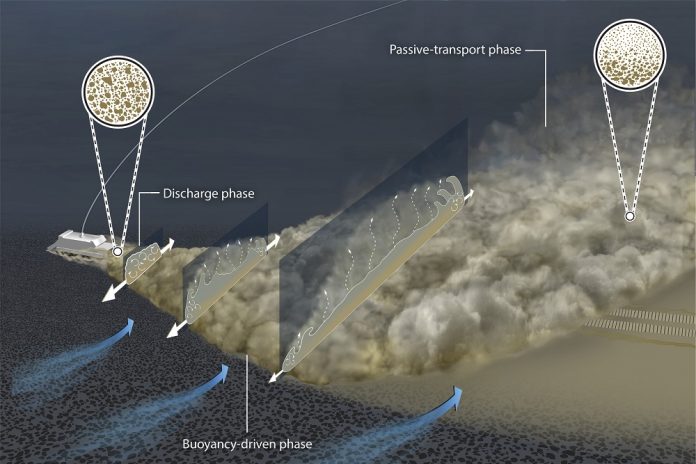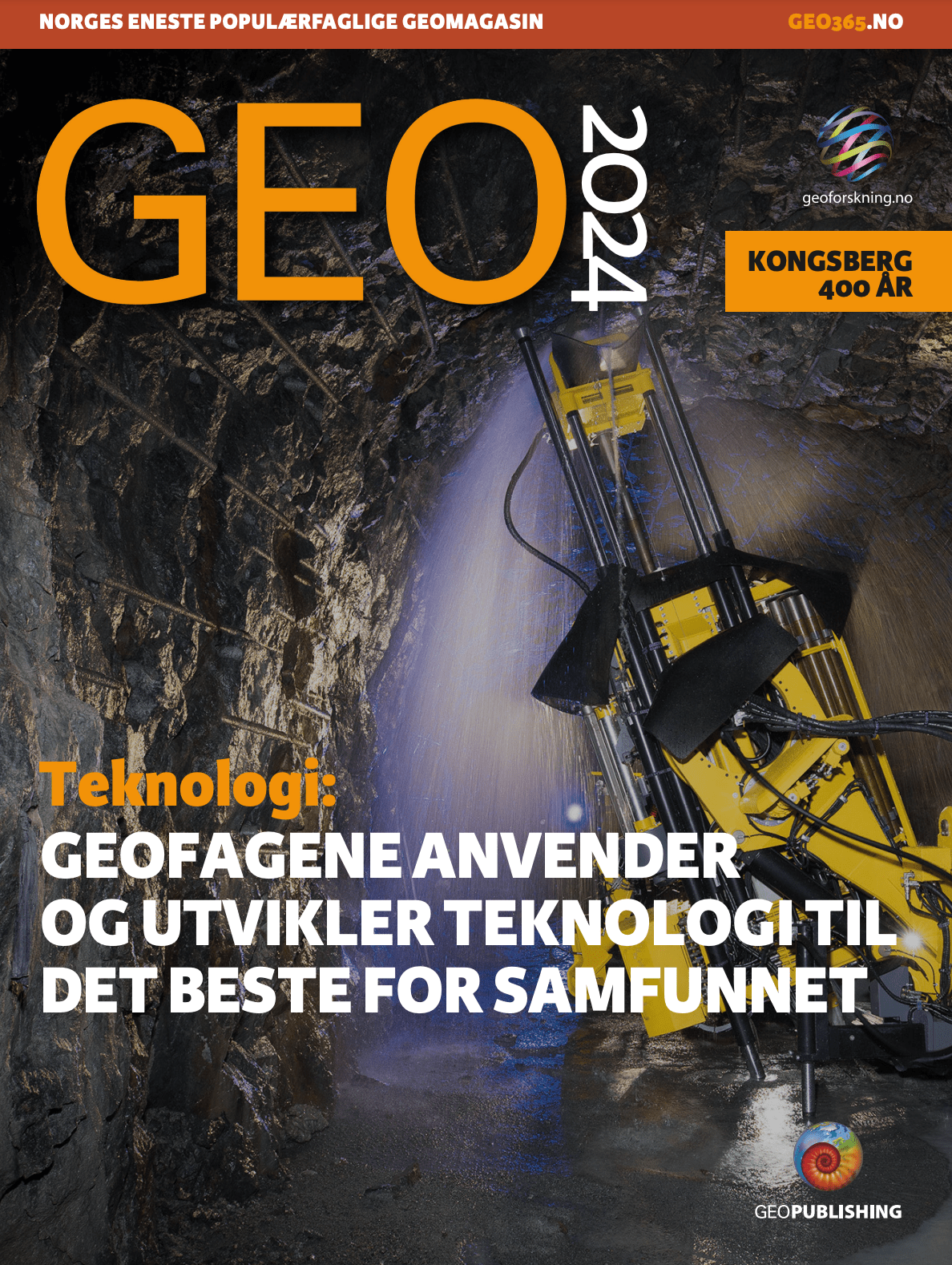Conceptual sketch showing a nodule collector plume’s discharge, buoyancy-driven, and passive-transport phases. Source: Peacock and Ouillon (2023)
Companies and academic institutions are spending a lot of effort to better understand how sediment plumes are generated and dispersed due to anthropogenic activities in the deep sea. We are also seeing new concepts being developed for mining equipment that may reduce the amount of suspended sediments generated considerably.
While most of these efforts have been focused on nodule mining on the abyssal floor, there are also (at least) two other types of resources being actively considered for extraction in the marine realm, namely cobalt crusts and seafloor massive sulfides (SMS).
Unlike nodule mining, the extraction of crusts and sulfides may require drilling, blasting, and removal of overburden. Sediment plumes specific to the two latter resources are currently less studied.
In an article published in the Annual Review of Fluid Mechanics, MIT researchers Thomas Peacock and Raphael Ouillon explain that crusts and sulfides typically occur in more rugged terrain such as ocean ridges, island arc systems, and seamounts, compared to nodules. The rough seafloor and sharply defined topographical features are often associated with strong internal tides and relatively high levels of turbulence.

They argue that the physical oceanography related to SMS and crust deposits makes extraction more complex and dynamic than that of nodule mining. Additionally, the topography encountered at these localities has the potential to significantly affect the buoyancy-driven phase of the collector plume if a turbidity current is generated.
The researchers point out that any future crust or SMS mining needs highly location and time-specific plume modeling efforts, as well as extensive monitoring, and that:
“A single model is unlikely to be able to capture all the relevant physics of the plume, from discharge to far-field transport, and a multiphysics, multiscale approach should be adopted that resolves the near-field processes that control the discharge.”
For SMS deposits, there is an opportunity to be guided by natural processes. Active hydrothermal vents produce natural plumes that have been studied in detail. While there are some differences between hydrothermal plumes and mining sediment plumes (a key difference being opposite plume buoyancy; a hydrothermal vent plume rises while a sediment plume sinks), there is much to be learned.
In conclusion, Peacock and Ouillon underscore the pressing need for fundamental fluid mechanics insight for future design and operation of proposed mining technology, whether the resource in question is nodules, crusts, or sulfides.



